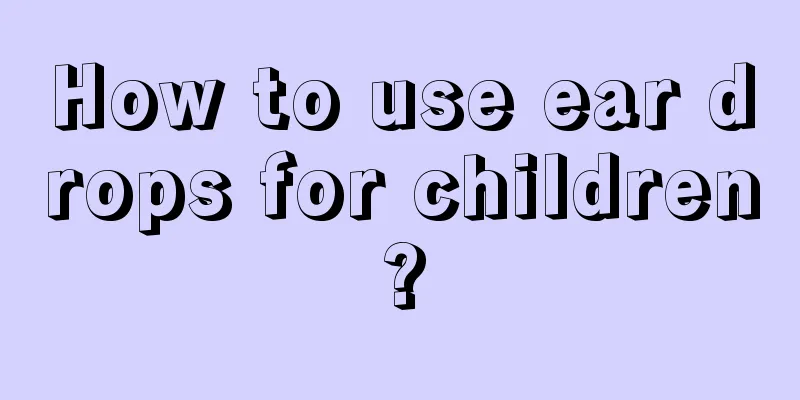How to use ear drops for children?

|
Children are a group with a high incidence of ear canal diseases, because their ears are underdeveloped, the ear canal has a low ability to protect itself, and is easily infected by bacteria. Therefore, the incidence of ear diseases in children is higher. Ear drops are generally used for treatment. There are special ear drops for children, but there are some precautions when using them. Let’s take a look at how to use ear drops for children. 1. Warm the ear before dripping In addition to hearing sounds, the human ear is also an important organ for maintaining balance. Some patients often feel dizzy and nauseous after using ear drops. This is because the temperature of the ear drops is much lower than human body temperature. The ear is divided into three parts: the outer ear, the middle ear, and the inner ear. The vestibular organ in the inner ear is very sensitive to cold stimuli, and will cause dizziness and nausea when stimulated. Before putting the medicine drops into the ear, you can cover the medicine bottle in the palm of your hand, or put it in warm water to warm it up, so that the temperature of the medicine liquid is close to body temperature, but remember not to make the temperature of the ear drops too high. If you suffer from purulent otitis media, you need to wipe off the purulent secretions with a sterilized cotton swab before applying the medicine, or thoroughly clean the external auditory canal with 3% hydrogen peroxide. After rinsing, clean the external auditory canal with a sterilized cotton swab and then apply the medicine. 2. When putting ear drops in the ear, pull it When dripping the medicine, you should usually sit with your head tilted to the side or lie on your side in bed, with the affected ear facing upwards. Grasp the earlobe and pull it upward and backwards (for children over 3 years old and adults)/backward and downward (for children under 3 years old) to straighten the ear canal. Fill the dropper with the medicine solution and drip the prescribed number of drops. This way, the medicine can flow slowly into the ear along the external auditory canal. Be careful not to let the dropper touch the wall of the external auditory canal to avoid contamination of the dropper. 3. Put it behind the ear and press it After applying ear drops, you should maintain the original position for 3 to 5 minutes and gently press the tragus with your fingers to allow the medicine to reach the affected area directly through external force. After getting up, the external auditory canal changes from the original vertical state to the horizontal state, and part of the liquid in the external auditory canal will flow out. This is a normal phenomenon. Wipe off the liquid that flows out. 4. What is ear bath? Some ear drops have clear requirements, and the ears should be bathed for about 10 minutes after the drops are placed in the ear. To put it simply, it is similar to giving your ears a bath. Drop the medicine into the external auditory canal, soak for about 10 minutes, allow the mucous membrane inside the ear to fully absorb the medicine, and then change your body position to allow the medicine to flow out. |
<<: What should I do if my child’s skin itches and develops red bumps?
>>: How to determine benign epilepsy in children?
Recommend
How high jaundice affects intelligence
Jaundice is the most common problem among newborn...
Do children need to be hospitalized for circumcision?
Many parents are more concerned about whether the...
Children's meat
During the period after a baby is born, there are...
What is the matter with the child shaking his head?
Every move of the children touches the hearts of ...
Baby diarrhea diet therapy
1. Steamed applesauce: Steamed apples have a good...
What to do if your child keeps coughing at night
We often hear some adults say that their children...
What if the child's face turns yellow?
I believe that most parents are very concerned ab...
What are the symptoms of gastroesophageal reflux in children?
Gastroesophageal reflux disease in children is re...
Causes of secretory otitis media in children
We know that children's immune function is no...
At what age can a baby sit in a stroller?
During the child's development process, paren...
Diet therapy for indigestion in children
Indigestion is a common disease among many childr...
What are the white spots on my child’s fingernails?
Children's health has always been the top con...
What should I do if my child has pharyngitis and cough?
Pharyngitis is a common disease. When people talk...
Are there any side effects of azithromycin in children?
Azithromycin for children is a nationally approve...
Why does my baby have swollen eyes after waking up?
For us adults, it is normal to sleep for 7-8 hour...









